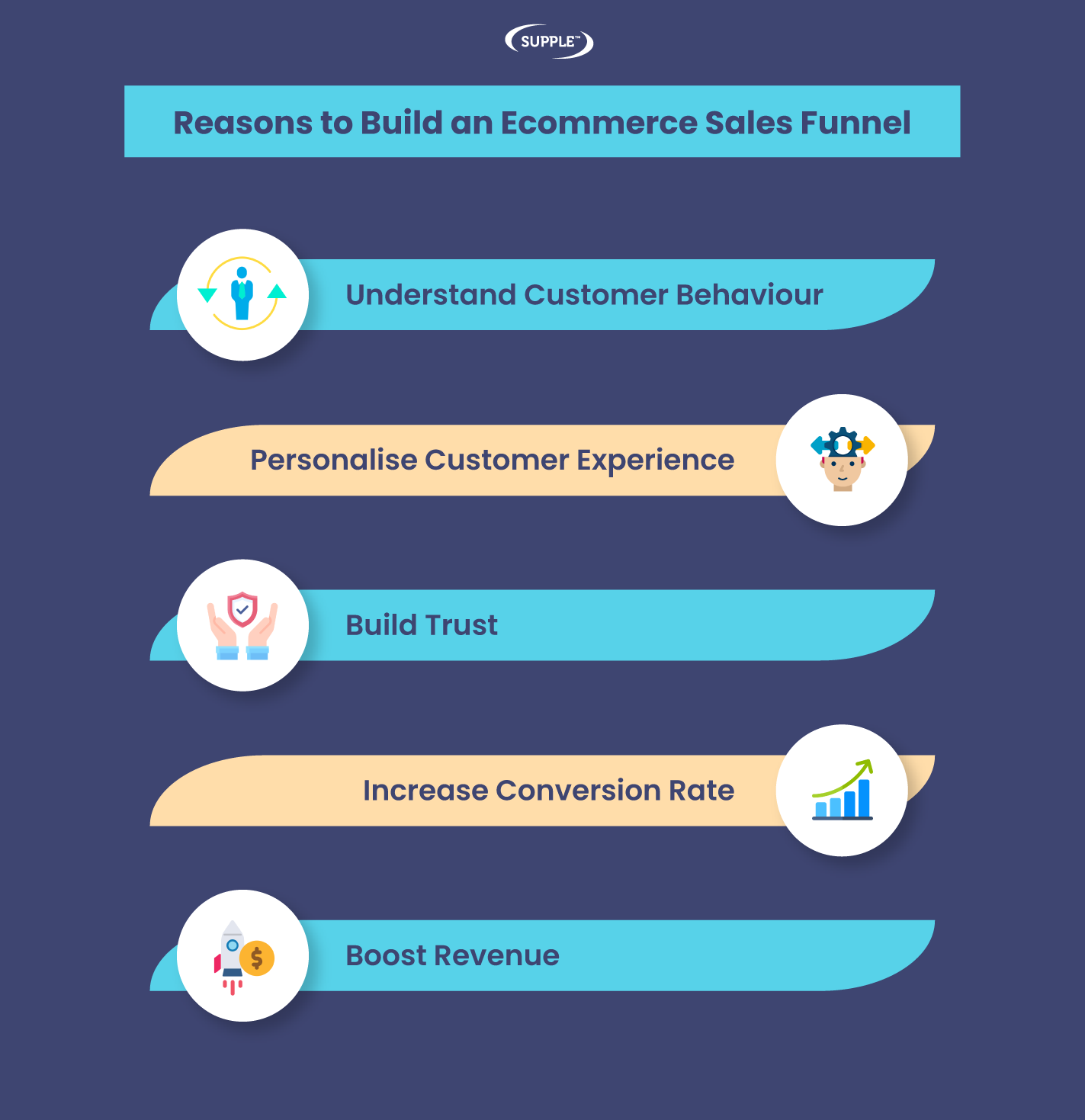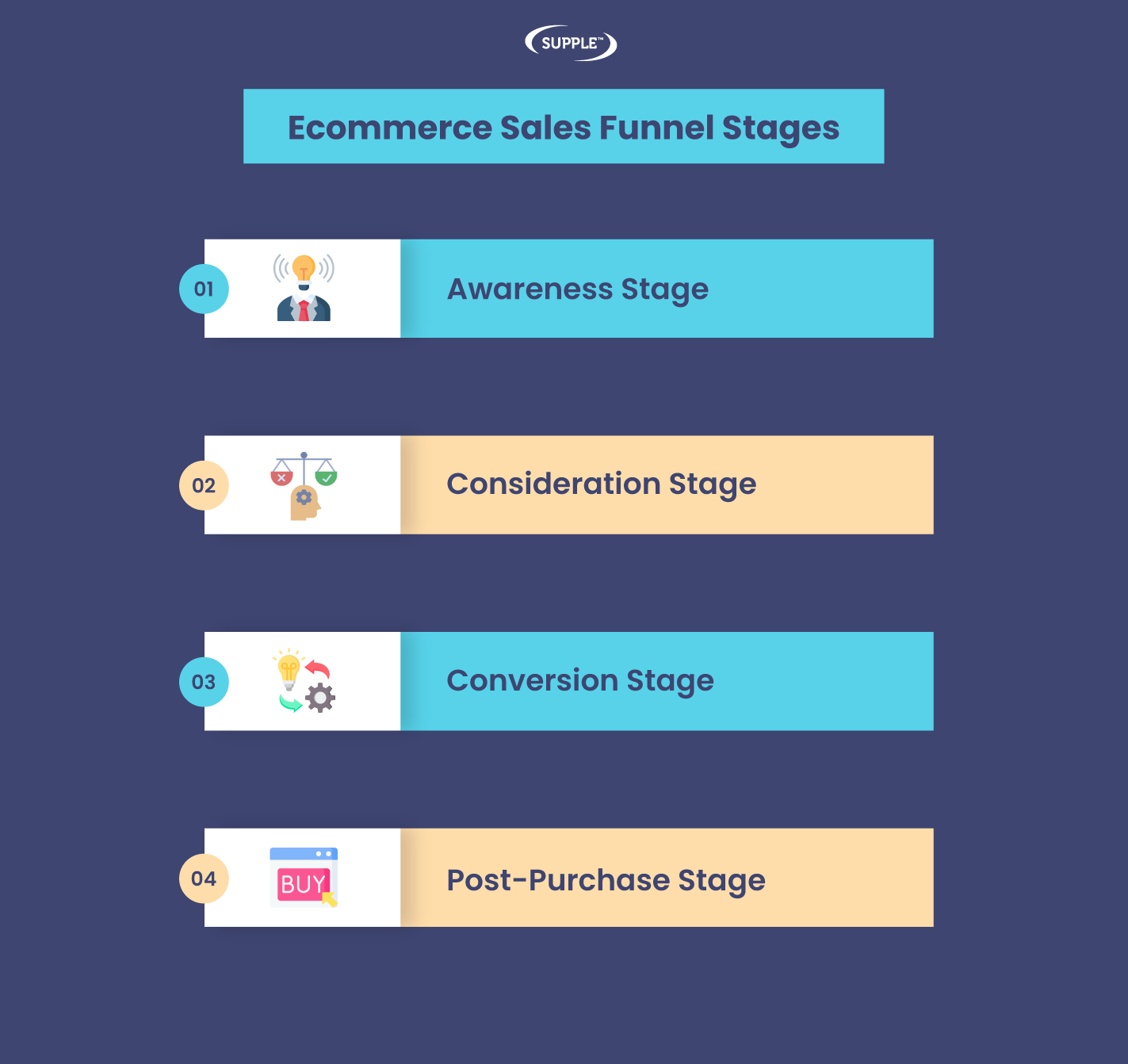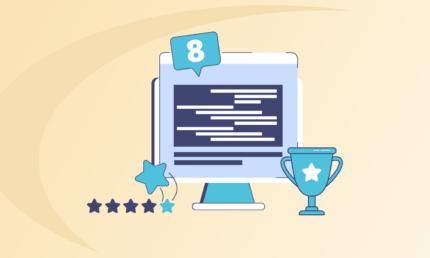eCommerce Sales Funnel: How to Build and Optimise Funnels That Converts
Imagine you’re starting an eCommerce business.
You have developed an attention-grabbing website on Magento or Shopify and added the most amazing products on your online store.
Yet, you’re hardly making any sales. Or worse yet, you aren’t making any sales at all!
The reason?
It’s simple — you’ve not built an eCommerce sales funnel for your online business yet.
Just like any other business, eCommerce businesses also need to have a well-optimised sales funnel in order to attract, engage, convert, and retain customers.
So if you’re looking for ways to increase your sales, you must learn how to build and optimise an eCommerce sales funnel.
In this post, we’ll show you exactly what goes into building the best eCommerce sales funnel. Along with it, we’ll also discuss tips to optimise the eCommerce sales funnel that drives conversions like clockwork.
Are you ready to learn? Let’s get started then!
What is an eCommerce Sales Funnel?
In sales, the funnel is a concept that consists of various stages of a user or customer journey. This can apply to any industry such as SaaS, Finance, and even eCommerce.
A sales funnel is a way to categorise all the people in your ecosystem where potential customers enter the top of the sales funnel and move down, stage by stage, until either, they drop midway or (hopefully) become paying customers.
Every business has its own unique sales funnel. However, the basic stages remain the same in almost every industry.
For instance, if you’re selling low-cost products such as toys in your locality (i.e. Melbourne or Sydney), your eCommerce sales funnel will be relatively short because the cost won’t be such a barrier to purchase for your target audience.
On the other hand, if you’re selling luxury products such as smartwatches or expensive jewellery, globally, your sales funnel is likely to run longer and it can take weeks or sometimes even months for your potential customers to reach your checkout page.
Why Do You Need a Sales Funnel for eCommerce?
There are plenty of reasons you need a sales funnel for your eCommerce business.
For starters, a smooth and well-planned eCommerce sales funnel can help to increase traffic to your website, grow brand awareness, improve conversion rate, and build your customer base.
Other than these, an eCommerce sales funnel can also provide valuable insights by tracking customer behaviour at each stage of the funnel to identify what’s working and what’s not, and use that data to optimise your eCommerce sales process over time.
In a nutshell, building an eCommerce sales funnel is a necessity for your business.
If you haven’t set up an eCommerce sales funnel yet, we’ll teach you the complete step-by-step process to build one in this article. Additionally, we will also give you a handful of tips along the way to optimise your eCommerce sales funnel to grow your sales & revenue.
How to Build & Optimise an eCommerce Sales Funnel?
Building a sales funnel largely depends on the number of steps needed to convert prospects into paying customers.
However, every sales funnel (including an eCommerce product sales funnel) typically involves four common stages.
Below, we’ve explained each stage of the eCommerce sales funnel process in detail, along with some tips for eCommerce sales funnel optimisation to generate maximum results.
1 - Awareness Stage
The first stage in an eCommerce sales funnel is the Awareness stage, which is also referred to as the Top of the Funnel (ToFu).
Consumers in the awareness stage are usually new to your eCommerce brand. They either found your company via Google (thanks to SEO), social media, or some other channel you may be using.
The goal of the awareness stage is to get your eCommerce brand in front of your potential customers, address their problems, and generate brand awareness. For this, you need to figure out all the steps you’ll need to take to make your potential customers more aware of their problem and its possible solution.
That’s where keyword research comes into the scene. It helps to find out what your customers are searching for on Google. Once you’ve identified the search terms your potential customers are using to find solutions to their problems, you need to make a great first impression.
Ideally, you should educate your potential customers about your company and how your product could be one of the solutions to their problems.
Tips to Optimise
The awareness stage in an eCommerce sales funnel requires producing and distributing educational & engaging content, usually through blog posts, social media, tutorials, webinars, etc.
Here are some quick tips for optimising your awareness stage:
- Leverage eCommerce SEO - According to an official Google report, almost half (49%) of online consumers use Google to discover or find new products on the internet. That means if you want to generate brand awareness and get your products in front of your potential customers, you have to invest in eCommerce SEO.
Doing so will help to optimise your eCommerce website to appear in the top search results in Google SERPs (Search Engine Result Pages). This, in turn, will get more people to know about your brand and products via relevant keywords.
- Use Social Media - Social media platforms are another critical channel to generate brand awareness and leads for your business. Depending on the type of products you sell, you can utilise sites like Facebook, Instagram, Pinterest, Twitter, etc. to grow your brand awareness and increase your website traffic.
A report by DataReportal revealed that 75% of social media users use social media to research products. Many of these users even use social media to look for product reviews and recommendations.
- Create Free Tools to Help Potential Customers - Another way to capture your prospects’ attention and generate brand awareness is by creating free tools that can help in the decision-making process.
Plus, free tools can help to generate high SEO value because of the high engagement they drive on the page. At Supple, for example, we’ve created tons of free DIY marketing tools like SEO Audit tool, HowTo Schema Generator, and many more.
Over time, these tools have helped us drive a significant amount of traffic & engagement on our website.
2 - Consideration Stage
The consideration stage in a sales funnel is also regarded as the Middle of the Funnel (MoFu). In this stage, your potential customers know who you are and what you sell.
They’ve also identified a pain point or a problem they’re suffering from and are looking for solutions. They might decide to subscribe to your blog or newsletter. And they may even be considering buying your product.
But to push them down to the purchase stage, you’ll have to work a little hard because your prospects are likely to be considering different options.
So, the goal in this stage is to position your product or brand as the best solution to their problem and get them to research your product more in-depth.
To do this, you can consider optimising your product pages with detailed information about your products, showing testimonials from previous buyers, or offering some enticing perks to tip the scale in your favour.
Tips to Optimise
When consumers enter the consideration stage of your eCommerce sales funnel, they officially become viable prospects. And now, it’s time to give them a little nudge.
Here are a few things you can consider doing to push as many prospects down the funnel as possible:
- Optimise Product Pages - If you want to push the maximum number of prospects down your sales funnel, you need to optimise your product pages accordingly.
As per an Etsy buyer survey, 90% of shoppers think the quality of product images is extremely important for making a purchase decision. However, simply adding high-res product images is not sufficient to optimise your product pages. You should also optimise images for SEO by adding appropriate file names and image alt text.
To bump up your SEO even further, write compelling product descriptions to make your products look interesting and relatable. If possible, consider adding a bullet list highlighting all benefits or key features of your product that prove why your product is better than competitors.
- Show Social Proof - Social proof is basically peer pressure wrapped up in a tasteful bow. In simple words, it’s a positive review or testimonial of your product given by your product’s previous buyers. Displaying social proof on your product pages can help in building a good reputation.
Plus, social proof can boost the likelihood of your prospects making a purchase from you. This is because when your prospects see that other people have purchased your product and enjoyed using it, they’re more likely to believe that your product is of good quality.
Most importantly, when you display social proof, showing you have many happy customers, it helps to establish that your products are reliable and your brand is trustworthy in your industry.
- Offer Perks - To encourage your prospects to buy your product, offer to give a discount on their first purchase, provide free shipping on their first order, or a bonus item upon a certain spend.
Doing so will help to reel your prospects in and turn them into paying customers. For this, you can consider displaying a pop-up offer when they arrive on your website for the first time. It will help to push them down the sales funnel and make a sale.
3 - Conversion Stage
The conversion stage in the eCommerce sales funnel is also referred to as the Bottom of the Funnel (BoFu).
Prospects who have arrived at the conversion stage are ready to make a purchase, but they’re not 100% sure that they want to buy from you. So, your job at this stage is to make the decision as easy as possible for your prospects.
One way to do this is by proving you’re better than the competition in different aspects such as product pricing, shipping options, hassle-free checkout, customer-friendly return policy, and better post-sales service.
Tips to Optimise
In the conversion stage, your prospects are extremely close to making a purchase. They just have a couple of internal doubts/objections they need to overcome.
So at this stage, your job is to get them to stop overthinking and buy from you.
Here are the most important things you can do to address their objections and get them to make a purchase.
- Eliminate Friction in the Checkout Process — To optimise the conversion stage in your eCommerce sales funnel, you need to evaluate your checkout process and make it frictionless.
According to the Baymard Institute report, 17% of consumers abandon their shopping cart if the checkout process is complicated or too long. That’s why it’s extremely crucial to optimise your checkout process.
To make your checkout process frictionless, you need to identify if there are any unnecessary steps involved in your checkout process and eliminate them.
- Display an Exit Intent Pop-Up — Exit intent pop-ups are a type of pop-up message that appears when a visitor is about to leave a website, usually by moving the cursor to the top of the browser window or the back button.
In eCommerce, exit intent pop-ups have proven to be immensely effective in reducing bounce rates and increasing conversions by encouraging visitors to take a specific action before leaving your website.
But in order to maximise conversions through exit intent pop-ups, you need to offer a time-limited discount or free shipping to give a hard push to prospects for making a purchase.
- Accept All Forms of Payment — Last but not least, accepting all forms of payment is crucial to maximising your conversion rate.
The same Baymard Institute survey also found that 9% of consumers abandon their shopping cart if there aren’t enough payment methods available.
Besides, since the average consumer carries multiple cards nowadays for different purposes, it’s crucial to meet their preferences by offering acceptance of all card types & payment methods.
4 - Post-Purchase Stage
Most eCommerce business owners think their job is done as soon as a customer makes a purchase. But that’s far from the truth!
Your eCommerce sales funnel does not end with a purchase, it ends after retaining as many of them as possible. You see, purchasers are still part of your sales funnel, just like your potential customers.
In fact, purchasers are more valuable because they have already done business with you and trust your brand. Secondly, retaining customers is much cheaper as well as easier than acquiring new ones.
All you have to do is figure out a customer retention strategy that works best for your eCommerce brand and leverage it to its fullest potential.
Here are a couple of quick tips you can use to optimise your post-purchase stage and increase your customer retention ratio.
Tips to Optimise
As we mentioned earlier, the post-purchase stage encompasses what happens after a customer makes a purchase.
Ideally, your goal at this stage is to continue attracting your customers for repeat purchases by constantly engaging with them after the first purchase.
Here are some things you can do to optimise your post-purchase stage and increase repeat purchases.
- Add Cross-Sells & Up-Sells — Cross-selling and upselling are both powerful strategies that can help to increase revenue by encouraging customers to buy either additional or more expensive products.
To increase your chances of making more cross-sells & upsells, leverage your customers’ purchase history to provide personalised product recommendations.
- Leave a Review — Asking for a review just after a customer has made a purchase from you can help to increase your sales since you can utilise these reviews to attract both existing and new customers.
Ideally, you should set up an email marketing campaign that sends an automated email every time a customer makes a purchase and ask about their buying as well as product experience.
To increase your chances of collecting more reviews, consider offering some kind of incentive like a limited-time discount on the next purchase.
- Ask to Refer a Friend — Just like product reviews or customer testimonials, you should also consider asking your customers to refer a product to your eCommerce brand.
For the uninitiated, referral marketing is one of the highly-effective and low-cost strategies that can help to acquire new customers fast.
Plus, customers who are referred by a friend are more likely to make a purchase from you because they have come to your eCommerce store on their friend’s recommendation.
Grow your Sales & Revenue with eCommerce SEO
Building and optimising the best eCommerce sales funnel is critical for converting your visitors into paying & repeat customers.
By optimising each stage in your sales funnel combined with the power of eCommerce SEO and the right set of strategies, you can boost your conversion rate and encourage your customers for repeat purchases & referrals.
That said, if you need help with setting up your eCommerce sales funnel or coming up with an SEO strategy, feel free to reach out to us at any time!
DIGITAL MARKETING FOR ALL OF AUSTRALIA
- SEO AgencyMelbourne
- SEO AgencySydney
- SEO AgencyBrisbane
- SEO AgencyAdelaide
- SEO AgencyPerth
- SEO AgencyCanberra
- SEO AgencyHobart
- SEO AgencyDarwin
- SEO AgencyGold Coast
- We work with all businesses across Australia






